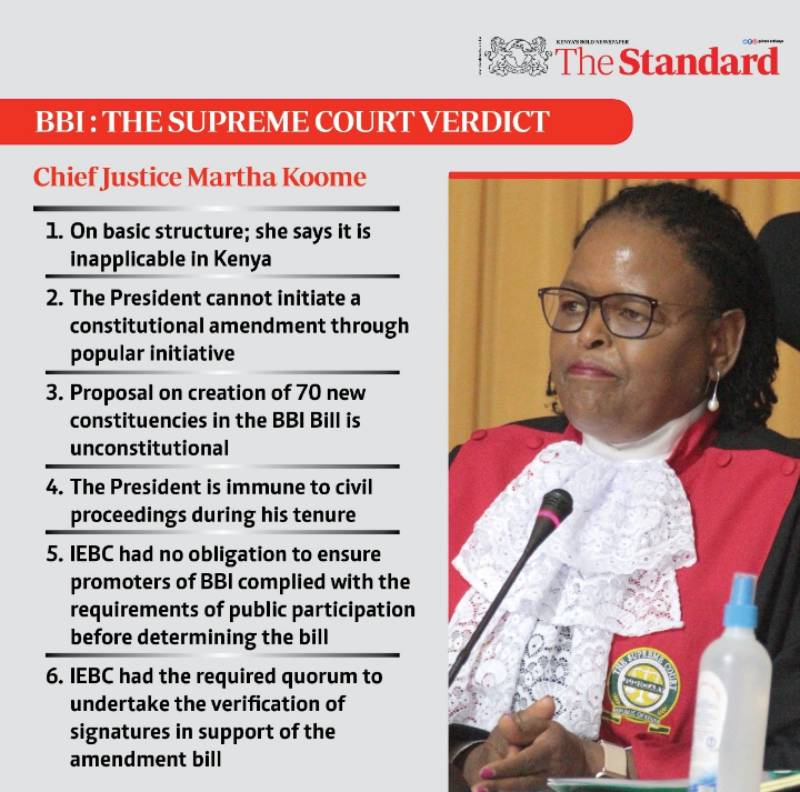Kenya’s Chief Justice Martha Koome on Thursday, March 31 ruled that public participation was inadequate during the roll-out of BBI changes in regard to boundaries delimitation.
She said, in her verdict, that the constitutional amendment process, in this regard, wasn’t satisfactory.
The Chief Justice also ruled that President Kenyatta overstepped his mandate when he initiated changes to the Constitution through the popular initiative route.
Below is a summary of the CJ’s verdict on the different contentious issues, which ended in the vicious Supreme Court battle:
Basic structure doctrine
High Court and Court of Appeal erred by “finding fourth Judiciary-created pathway for amending the Constitution”; said applicability of basic structure doctrine should be flexible.
IEBC role in delimitation
BBI proponents overstepped their mandate by allocating and apportioning 70 new constituencies; held that only IEBC has the power to do so.
Uhuru’s popular initiative
President Uhuru Kenyatta did not have the right to use popular initiative route to initiate changes to the Constitution; stated that the option, which is available only to mwananchi, excludes Legislature and Executive.
Public participation
Public participation was inadequate during the roll-out of BBI changes, says the constitutional amendment process, in this regard, wasn’t satisfactory. This was in regard to boundaries delimitation.
Civil proceedings against sitting president
Civil proceedings cannot be instituted against a sitting president, and that the lower courts engaged in “judicial overreach”.
IEBC quorum
The electoral board had a quorum when it undertook the verification of signatures in support of the amendment Bill. The IEBC had three commissioners at the time.

 Business News1 week ago
Business News1 week ago
 General News3 days ago
General News3 days ago
 Entertainment7 days ago
Entertainment7 days ago
 General News3 days ago
General News3 days ago






